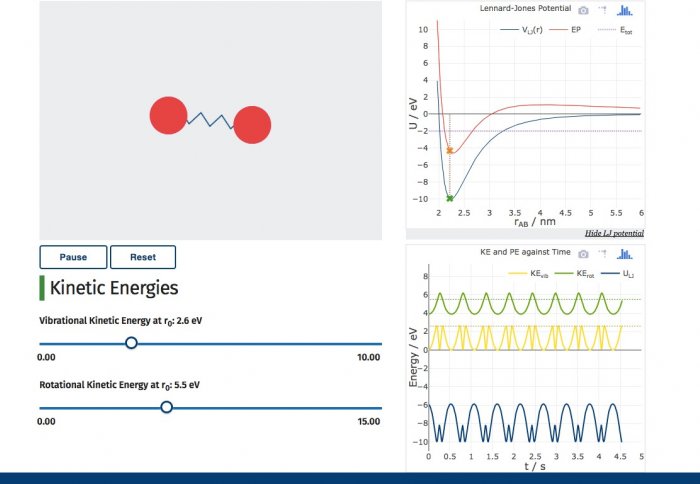

Imperial students have developed a set of visualisations to help others understand complex physics concepts.
The project was funded by Imperial’s dedicated learning and teaching innovation fund, and came about because academics wanted new ways of helping students to learn.
Dr Caroline Clewley, a Senior Teaching Fellow in Imperial’s Department of Physics, had noticed that one of the most challenging things about teaching Physics was bringing to life abstract concepts.
 “Interactive visualisations can enhance conceptual understanding – but they need to be well designed and aligned with learning objectives, and none of the existing visualisations I found fitted with our topics,” she said.
“Interactive visualisations can enhance conceptual understanding – but they need to be well designed and aligned with learning objectives, and none of the existing visualisations I found fitted with our topics,” she said.
Online visualisations are versatile teaching tools which can be used during lectures to explain difficult concepts, paired with a problem sheet for tutorials or coursework, or shared to allow students to explore concepts in preparation for teaching sessions.
Alongside colleagues Professor Dimitri Vvedensky, Professor Peter Török, and Dr Jonathan Eastwood, also from the Department of Physics, Dr Clewley applied for funding from Imperial’s new Excellence Fund for Learning and Teaching Innovation. The fund was established to support courageous and innovative initiatives that will challenge students to fulfil their potential.
The funding allowed her to recruit current students from Imperial’s Undergraduate Research Opportunities Programme (UROP) to work on creating an initial set of visualisations over the summer, focusing mainly on the first year Physics course.
Robert King, an undergraduate student in the Department of Physics, was one of the team working on the project. He said: “As I had just finished first year myself, I felt I had a good idea of the areas that could be supplemented by a visualisation. We also spoke to the individual course lecturers to get their feedback on areas of the course that they felt could use a visualisation and that would enhance their course.
“The project was the first time I had done coding in a large team. It was also a new experience collaborating with people from different departments who each brought something new to the table.”
By the end of the project, the team had created over 20 visualisations, covering a range of topics from linear algebra to electromagnetism. Dr Clewley is now trialling the visualisations in various learning settings.
Dr Clewley sees potential uses for similar visualisations in engineering and medicine, to help students understand the mathematical concepts that underpin their subjects. The project has already received funding for another year in order to create a multi-departmental UROP team in the next summer break, working on concepts for lecture courses across the College. The team will be putting out a call for expressions of interest from departments in the new year.
- Imperial staff and students on campus can access the visualisations online
Article text (excluding photos or graphics) available under an Attribution-NonCommercial-ShareAlike Creative Commons license.
Photos and graphics subject to third party copyright used with permission or © Imperial College London.
Reporter
Elizabeth Nixon
Communications Division

Contact details
Tel: +44 (0)20 7594 6699
Email: e.nixon@imperial.ac.uk
Show all stories by this author




Leave a comment
Your comment may be published, displaying your name as you provide it, unless you request otherwise. Your contact details will never be published.